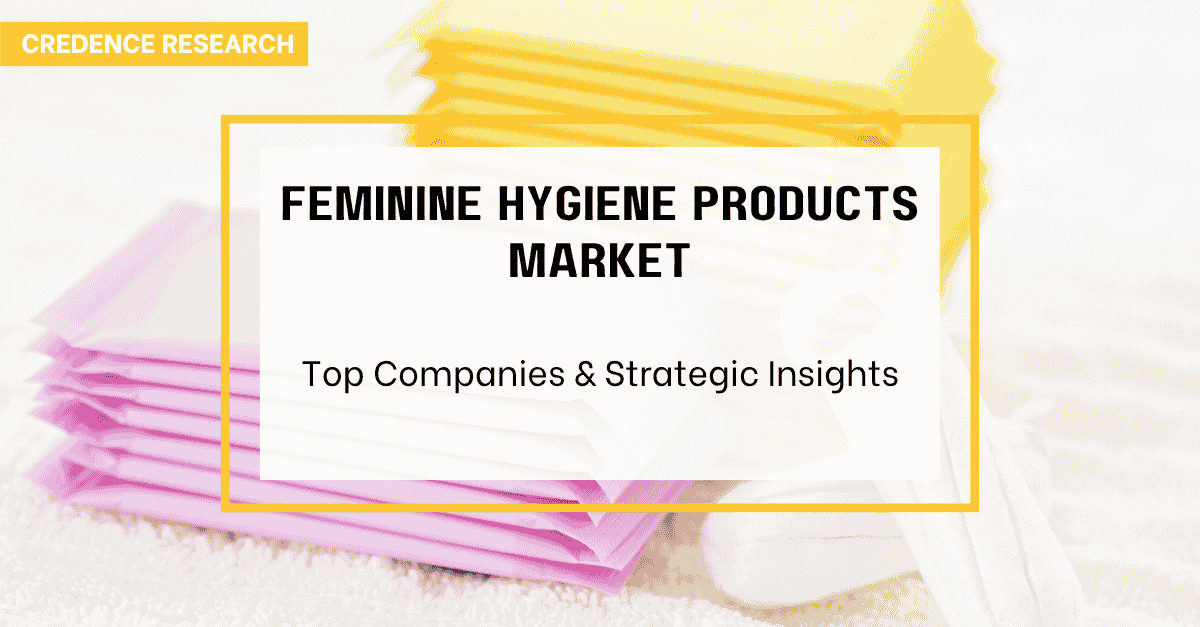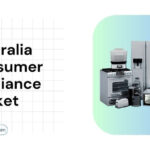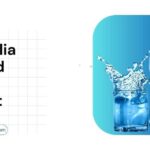The global feminine hygiene market exhibits a dual structure: it is dominated by a few prominent multinational corporations, yet simultaneously, it is experiencing dynamic disruption from a growing number of agile local and startup companies. These established players, including Procter & Gamble Company, Unicharm Corporation, Essity AB, Kimberly-Clark Corporation, Ontex Group NV, Edgewell Personal Care, Johnson & Johnson, Unilever Plc., Hengan International Group, Kao Corporation, Lil-Lets Group Ltd., Maxim Hygiene, The Honey Pot Company, First Quality Enterprises, Inc., and Organyc, collectively command the largest market share and often set industry trends. Their influence extends across product innovation, sustainability commitments, and strategic mergers and acquisitions.
However, the market structure is not static. While large players maintain broad market share through extensive portfolios and distribution networks, smaller, specialised brands are effectively carving out significant, high-growth niches. These disruptive entrants often differentiate themselves on specific value propositions, such as “organic and plastic-free” offerings (e.g., Natracare, mentioned in ), “plant-derived ingredients” (e.g., The Honey Pot Company ), or products made with “100% organic cotton” (e.g., Organyc ). These agile players frequently leverage direct-to-consumer (DTC) models and e-commerce platforms, which reduce traditional barriers to entry related to physical distribution. This dynamic suggests that future market leadership will increasingly depend on a blend of scale and agility. Large corporations may seek to acquire innovative niche brands to integrate these capabilities and neutralise potential competitive threats from rapidly growing startups, as exemplified by Compass Diversified’s acquisition of The Honey Pot Company.
Top 15 Companies: Key Feminine Hygiene Brands & Product Categories
|
Company Name |
Headquarters (Country) |
Key Feminine Hygiene Brands |
Primary Product Categories |
Key Differentiators |
|
Procter & Gamble Company |
U.S. |
Always, Tampax, Whisper, Just, Always Discreet, This is L |
Pads, Liners, Tampons, Period Underwear, Incontinence Pads |
Extensive product range, global distribution, strong brand recognition, R&D investment |
|
Kimberly-Clark Corporation |
U.S. |
Kotex, Intimus |
Pads, Liners, Tampons |
Global presence, established brand reputation, focus on confidence |
|
Essity AB |
Sweden |
Libresse, Bodyform, Saba, Nosotras, TOM Organic, Modibodi, Knix |
Pads, Liners, Tampons, Intimate Washes/Wipes, Leakproof Apparel, Menstrual Cups |
Innovative & sustainable products, strong regional brands, global V-brand platform |
|
Unicharm Corporation |
Japan |
Sofy, Silcot |
Pads, Liners, Tampons, Menstrual Cups, Period Underwear, Cotton Pads |
Localized product development, market growth phase strategies, “Management with Resonance” |
|
Edgewell Personal Care |
U.S. |
Playtex, Stayfree, Carefree, o.b. |
Tampons, Pads, Liners |
Diverse brand portfolio, focus on specific needs (e.g., active, applicator-free), strategic acquisitions |
|
Ontex Group NV |
Belgium |
NAT, Silhouette |
Pads, Liners, Tampons |
Affordable quality, competitive innovation, cost-efficient operations, private label manufacturing |
|
Johnson & Johnson |
U.S. |
(Divested most menstrual brands) |
(Historical: Stayfree, Carefree, o.b.) |
Strong reputation for quality & innovation in healthcare, historical women’s health advocacy |
|
Unilever Plc. |
U.K. |
VWash, Seventh Generation, Luna Daily (investment) |
Intimate Washes, Eco-friendly Feminine Care, Intimate Body Care |
“Positive Beauty” vision, global scale, strategic acquisitions/investments |
|
Hengan International Group |
China |
Space 7 (七度空間), Anle (安乐), Sweet Dream Pants (萌睡褲) |
Sanitary Napkins, Panty Liners, Disposable Period Pants |
Leading China market position, premiumization, new retail channel expansion, social responsibility |
|
Kao Corporation |
Japan |
Laurier |
Sanitary Napkins/Pads, Pantyliners, Period Panties |
Reliability & comfort focus, R&D for skin health/absorbency, Kirei Lifestyle Plan (sustainability) |
|
Lil-Lets Group Ltd. |
U.K. |
Lil-Lets |
Tampons, Pads, Liners, Intimate Washes/Wipes, Reusables (Cups, Applicators) |
Comfort (widthways expansion), product transparency, sustainability, period equality advocacy |
|
Maxim Hygiene |
U.S. |
Maxim Hygiene |
Sanitary Napkins, Liners, Tampons, Period Underwear, Cotton Products |
100% cotton/chlorine-free pioneer, natural/eco-friendly focus, family-owned |
|
The Honey Pot Company |
U.S. |
The Honey Pot Company |
Washes, Wipes, Pads, Liners, Tampons, Menstrual Cups, Suppositories |
First plant-derived brand, herbal ingredients, clinically-tested, taboo-breaking marketing |
|
First Quality Enterprises |
U.S. |
Incognito, Prevail |
Panty Liners, Ultra-thins, Maxi Pads |
High-quality affordable essentials, people-centered design, sustainable sourcing, advanced tech |
|
Organyc |
Italy |
Organyc |
Pads, Liners, Tampons, Light Incontinence, Intimate Washes/Wipes |
Clinically-proven, 100% organic cotton, 100% biodegradable, geothermal energy use, “Expect Respect” |
Company Profiles: Product Portfolios & Key Differentiators
A diverse group of companies characterizes the global feminine hygiene market, each with its unique product portfolio and strategic differentiators.
Procter & Gamble Company (U.S.): P&G is a dominant force, offering a wide array of feminine care products. Its portfolio includes popular brands such as Always (pads, daily liners, period underwear, bladder leak protection), Tampax (tampons), Whisper (menstrual hygiene products, particularly strong in Asia), and Just (feminine care pads and tampons). The company also markets Always Discreet for incontinence pads, covering both period and bladder care. P&G’s key differentiators include its extensive product range catering to diverse needs, a robust global distribution network, and a highly recognized brand portfolio. The company reported a 9% growth in its baby, feminine, and family care business segment, reaching USD 20,217 million in the first half of 2023, underscoring its market strength.
Kimberly-Clark Corporation (U.S.): Kimberly-Clark is a major global player known for its paper-based consumer products. Its feminine care segment is primarily represented by the Kotex brand, which offers a variety of feminine hygiene products, including pads (ultra-thin, maxi), panty liners, and tampons, alongside the Intimus brand. The company’s strengths lie in its strong global presence, with products sold in over 175 countries, and a well-established brand reputation for Kotex. Kimberly-Clark focuses on inspiring confidence in women through its product offerings.
Essity AB (Sweden): Essity is a leading global hygiene and health company with a diverse portfolio of feminine hygiene and health care brands. Its product offerings include pads, panty liners, tampons, intimate soaps, intimate wipes, leakproof apparel (under brands like Modibodi and Knix), and menstrual cups. Key brands include Libresse, Bodyform, Saba, Nana, Nosotras, and TOM Organic. Essity differentiates itself through its focus on innovative and sustainable products, leveraging a global V-brand platform to drive shared innovation and consumer insights, thereby strengthening its regional brands.
Unicharm Corporation (Japan): Unicharm specializes in disposable hygiene products, with a significant presence in feminine hygiene. Its primary feminine care brand is Sofy, which offers a comprehensive range including pads, panty liners, tampons, menstrual cups, and period underwear. The company also markets Silcot, known for cotton pads used in skincare. Unicharm’s competitive edge stems from its strong focus on product development tailored to local cultures and lifestyles, implementing specific strategies for each phase of market growth, and a unique “Management with Resonance” model that fosters close cooperation between management and frontline employees.
Edgewell Personal Care (U.S.): Edgewell maintains a notable position in the feminine care market with brands such as Playtex, Stayfree, Carefree, and o.b., offering a range of products including tampons, pads, and liners. The company differentiates its offerings by catering to diverse needs and preferences, with specific brands targeting active lifestyles (e.g., Playtex Sport) or providing applicator-free options (o.b.). Edgewell has also pursued strategic acquisitions, such as Cremo and Billie, to expand and diversify its overall personal care portfolio.
Ontex Group NV (Belgium): Ontex is a global supplier of personal hygiene products, including feminine care items such as sanitary towels, panty liners, and tampons. Its feminine care brands include NAT and Silhouette. Ontex also serves as a significant manufacturer for private labels. The company’s competitive advantages lie in its focus on providing affordable, high-quality personal hygiene products globally, coupled with a strong emphasis on innovative competitiveness, cost-efficient operations, and a customer-centric business approach.
Johnson & Johnson (U.S.): Historically, Johnson & Johnson has been a prominent player in the feminine hygiene market, with brands such as Stayfree, Carefree, and o.b. However, the company divested these brands to Energiser Holdings in 2013. While its current direct feminine hygiene product portfolio may be less prominent in menstrual care, J&J maintains a strong reputation for quality and innovation across its broader healthcare segments and has a long history of championing women’s health initiatives globally.
Unilever Plc. (U.K.): Unilever’s presence in the feminine hygiene sector has been primarily through strategic acquisitions and investments. This includes brands like VWash (an intimate hygiene brand acquired in India) and Seventh Generation (a brand offering eco-friendly cleaning and personal care products, including feminine care). Unilever has also invested in Luna Daily, an intimate body care brand. The company’s differentiators include its broad portfolio across beauty & wellbeing, as well as personal care, a strategic focus on “Positive Beauty” (emphasizing inclusivity and sustainability), and leveraging its global scale for market-making innovations.
Hengan International Group (China): Hengan is recognized as China’s largest producer of sanitary napkins and baby diapers. Its feminine care brands include Space 7 (七度空間), Anle (安乐), and “Sweet Dream Pants” (萌睡褲). The company offers a range of sanitary napkins, panty liners, and disposable period pants. Hengan’s competitive strengths lie in its leading position in China’s mid-to-high-end market and traditional sales channels, a continuous focus on product upgrades and premiumization, and active expansion into new retail channels. The company also places a strong emphasis on social responsibility and community welfare.
Kao Corporation (Japan): Kao’s feminine care products are primarily marketed under its Laurier brand, which falls within the “Sanitary care” category. This brand offers sanitary napkins/pads, pantyliners, and period panties. Kao differentiates itself through a strong focus on reliability and comfort, backed by extensive research and development to address issues such as skin irritation and absorbency (e.g., the Super Absorbent Fibre Non-woven Sheet). The company is also committed to sustainability through its “Kirei Lifestyle Plan”.
Lil-Lets Group Ltd. (U.K.): Lil-Lets offers a comprehensive range of feminine hygiene products. This includes tampons (non-applicator and applicator types), various pads (soft pads, FreshLock pads, maxi pads, maternity pads, teen pads), pantyliners, intimate washes, powders, wipes, and a growing line of reusable options, such as menstrual cups and reusable tampon applicators. Key differentiators for Lil-Lets include its focus on user comfort (e.g., widthways expanding tampons), a strong commitment to product transparency (providing detailed material breakdowns), and a robust stance on sustainability (e.g., discontinuing plastic applicator tampons since 2021) and period equality.
Maxim Hygiene (U.S.): Maxim Hygiene specializes in organic and natural cotton feminine care products. Its portfolio includes sanitary napkins, liners, tampons, and period underwear. The company also offers related cotton products like cotton balls, swabs, and makeup removers. Maxim Hygiene is recognized for being one of the first U.S.-based companies to introduce a comprehensive line of 100% cotton and chlorine-free menstrual care products. Its strong emphasis on natural, healthy, and eco-friendly products, free from synthetics and harmful chemicals, serves as a core competitive advantage.
The Honey Pot Company (U.S.): The Honey Pot Company is recognized as the world’s first plant-derived feminine care brand. Its product range includes foaming washes, cleansing wipes, pads (herbal-infused and non-herbal), pantiliners, organic cotton tampons, menstrual cups, and boric acid suppositories. The brand’s key differentiators are its focus on natural, herbal ingredients, clinically and gynaecologist-tested formulations, and a mission to challenge period taboos through its brand positioning around “Periods Made Better” and products “made by humans with vaginas, for humans with vaginas”.
First Quality Enterprises, Inc. (U.S.): First Quality Enterprises manufactures a range of feminine care products, including panty liners, ultra-thin pads, and maxi pads, under brands such as Incognito and Prevail. The company also produces adult incontinence and baby care products. Its competitive advantages stem from a focus on high-quality, affordable essentials, a people-centred design philosophy, sustainable material sourcing, and the integration of advanced technologies in its manufacturing processes. First Quality maintains strong manufacturing capabilities and a significant presence in both the healthcare and retail sectors across North America.
Organyc (Italy): Organyc offers a comprehensive range of 100% certified organic cotton feminine hygiene products. Its portfolio includes pads, liners, tampons (both applicator and digital), light incontinence products, and intimate washes/wipes. The brand’s primary differentiators are its clinically proven protection against irritation from chemicals, dyes, and synthetics; the exclusive use of 100% certified organic cotton throughout its products; and a strong commitment to environmental responsibility, with 100% biodegradable products and packaging, as well as the use of geothermal and natural energy in manufacturing. Organyc’s brand philosophy, “Expect Respect,” encapsulates its commitment to the body, sensitive skin, and the Earth.
Comparative Analysis of Top Companies: Strategic Pillars & Recent Developments
|
Company Name |
Primary Competitive Strategy |
Key Innovation Focus |
Key Sustainability Initiatives |
Core Marketing/Branding Message |
Recent Strategic Moves |
|
Procter & Gamble |
Market Penetration, Premiumization |
Extensive R&D, diverse product range, leak protection, comfort |
Water efficiency goals, responsible sourcing, community programs |
“Trusted protection,” “We Care About All Women & Girls” |
9% growth in feminine care segment (H1 2023) |
|
Kimberly-Clark |
Global Presence, Brand Reputation |
Confidence-inspiring products, product quality |
Reducing environmental footprint, “Kotex She Can Initiative” |
“Inspire confidence,” “Trusted by millions” 49 |
Focus on Kotex & Intimus brands |
|
Essity |
Innovation, Sustainability, Regional Strength |
Sustainable products, leakproof apparel, menstrual cups, V-brand platform |
Net-zero emissions by 2050, circularity, UNICEF partnership |
“Improving well-being,” “Breaking V-Zone taboos” |
Extended UNICEF partnership (2022) |
|
Unicharm Corporation |
Localized Growth, Market Uptake |
Tailored products, nonwoven fabric tech, absorbent processing |
Diaper recycling, “Kyo-sei Life Vision 2030” ESG goals |
“Love Your Possibilities,” “comfortable life” (Sofy) |
Joint venture for local production in Kenya (2025) |
|
Edgewell Personal Care |
Portfolio Diversification, Niche Acquisition |
Applicator-free tampons, active lifestyle products, skin care |
“Sustainable Care 2030” strategy, GHG reduction, recycling programs |
“Designed for life,” “Bringing joy to everyday life” |
Acquired Cremo (2020) & Billie (2021) |
|
Ontex Group NV |
Affordability, Cost-Efficiency, Customer-Centricity |
Competitive innovation, new feminine care products |
FSC/PEFC/OEKO-TEX certified materials, waste reduction |
“High quality products accessible to all,” “Confidence and dignity” |
Introduced SatinSense tampons & Confidaily liners (2023) |
|
Johnson & Johnson |
Quality & Innovation (Healthcare) |
(Historical: adhesive strip pads, ovulation/pregnancy tests) |
Product sustainability investment, maternal health initiatives |
“Championing women’s health” |
Committed $800M by 2030 for product sustainability |
|
Unilever Plc. |
Positive Beauty, Global Scale, Acquisitions |
Plant-based, natural ingredients, intimate body care |
“Positive Beauty” vision, nature regeneration, plastics reduction |
“Brighten everyday life for all,” “Inclusive & sustainable” |
Invested in Luna Daily (2024), acquired VWash |
|
Hengan International Group |
Premiumization, Channel Expansion |
Product upgrades (ultra-thin, extra-long, pants-style) |
Social responsibility, low-carbon/green development |
“Freedom Without Limits,” “High-quality feminine care” |
Launched “Heavenly Mountain Cotton Series” (2023) |
|
Kao Corporation |
Reliability & Comfort, ESG Strategy |
Skin-friendly materials (Super Absorbent F Fiber), leak-free tech |
Kirei Lifestyle Plan (decarbonization, zero waste, water conservation) |
“Reliability and Comfort,” “Healthy Skin” (Laurier) |
Laurier GANBATE campaign for MHM awareness (2023) |
|
Lil-Lets Group Ltd. |
Choice & Education, Sustainability |
Widthways expanding tampons, reusable applicators, organic products |
Plant-based/biodegradable pads, no plastic applicators (since 2021) |
“Choice is everything,” “Period equality” |
Discontinued plastic applicator tampons (2021) |
|
Maxim Hygiene |
Organic & Natural Purity |
100% organic cotton, chlorine-free, no harmful chemicals |
Consumer health, environmental preservation, “Plastics for Change” |
“Healthiest & most eco-friendly products,” “Pure Cotton Essentials” |
Pioneered 100% cotton/chlorine-free in US (2008) |
|
The Honey Pot Company |
Plant-Derived, Holistic Wellness |
Herbal infusions, clinically/gynecologist-tested formulations |
Social impact, plant-derived ingredients |
“Periods Made Better,” “Plant-derived feminine care” |
Acquired by Compass Diversified (2024) |
|
First Quality Enterprises |
High-Quality Affordable Essentials |
Leakage protection, skin health, comfort, discretion |
Energy management, sustainable packaging, waste reduction |
“Make Things Better,” “Improve every stage of life” |
Focus on people-centered design, advanced technologies |
|
Organyc |
100% Organic, Clinically-Proven |
Organic cotton, biodegradable materials, natural energy |
100% biodegradable products/packaging, geothermal/solar energy |
“Expect Respect,” “Clinically-Proven Protection” |
Partnership with “Plastics for Change” |
Competitive Strategies & Market Positioning
Companies in the feminine hygiene market employ a multifaceted array of competitive strategies to secure and expand their market positions, encompassing innovation, sustainability, marketing, pricing, and strategic alliances.
Innovation & Product Development Focus: A primary strategic pillar for manufacturers is the continuous development of safer, easy-to-use, and comfortable hygiene products. This often involves the use of softer materials to minimize allergic reactions and skin rashes. A significant and growing trend is the shift towards biodegradable materials, such as organic cotton, bamboo fibre, and corn starch, and the promotion of reusable alternatives like menstrual cups, period underwear, and cloth pads.
This movement is driven by a dual objective: reducing environmental impact and meeting the evolving demand of consumers for sustainable options. Emerging innovations also include smart menstrual cups equipped with Bluetooth sensors for flow tracking, pH-balancing pads, temperature-sensitive pads designed for cramp relief, and self-cleaning/antimicrobial pads, indicating a move towards technologically integrated solutions. Companies like Lil-Lets, with its reusable applicator, and The Honey Pot Company, with its herbal-infused pads, exemplify product development driven by direct consumer feedback and a proactive response to evolving needs.
This convergence of health consciousness and environmental awareness is driving a new wave of “holistic wellness” product innovation. This evolution extends beyond basic absorbency to encompass comprehensive comfort, skin health, ecological impact, and even data-driven insights into menstrual cycles. The market is maturing beyond mere functional performance, with brands now competing on a broader spectrum of value that includes health benefits, ecological footprint, and personalized digital integration. This requires research and development departments to collaborate with diverse experts, including dermatologists, environmental scientists, and technology developers, fundamentally transforming the product development paradigm in the industry.
Sustainability Initiatives & ESG Commitments: Sustainability has transitioned from a niche differentiator to a core competitive necessity. Many companies are deeply embedding sustainability into their strategic frameworks, focusing on reducing their environmental footprint through initiatives such as achieving net-zero emissions, minimizing waste generation, conserving water, and sourcing raw materials responsibly.
They are also actively promoting circularity in their product lifecycles. Examples include Essity’s partnership with UNICEF to promote menstrual hygiene, Johnson & Johnson’s commitment to invest USD 800 million by 2030 in product sustainability, Procter & Gamble’s water efficiency goals, and Lil-Lets’ decision to discontinue plastic applicator tampons. Companies like Organyc emphasize 100% biodegradable products and packaging, and engage in partnerships such as “Plastics for Change”. This widespread adoption of sustainability is driven by increasing consumer demand and growing regulatory scrutiny.
Brands that can authentically demonstrate their commitment across the entire value chain, from responsible sourcing to manufacturing and product end-of-life, will gain a significant reputational and market advantage. This indicates that sustainability is no longer merely a corporate social responsibility function but a fundamental aspect of competitive strategy, influencing product design, operational efficiency, brand image, and investor relations. Brands that effectively communicate quantifiable reductions in their environmental footprint will build stronger consumer trust and may command a premium, particularly as younger, environmentally aware consumers increasingly influence purchasing decisions.
Marketing & Branding Approaches: The industry is witnessing a profound evolution in its marketing and branding approaches, moving away from traditional, often euphemistic, advertising towards more honest, empathetic, and inclusive messaging. This is exemplified by Kotex replacing clichés with direct discussions about intimate anatomy, Essity’s “V-Zone” campaign, and The Honey Pot Company’s “Periods Made Better” campaign, which challenges idealized narratives surrounding menstruation. Digital and social media platforms, along with influencer marketing and consumer testimonials, have become indispensable tools for consumer engagement, particularly among younger demographics.
Educational and awareness initiatives, often conducted in partnership with NGOs or schools, are crucial for increasing menstrual literacy and breaking down deeply ingrained taboos. Brand positioning increasingly emphasizes wellness, self-care, and empowerment, with some brands even designing gender-inclusive products and marketing to acknowledge a broader spectrum of menstruators. This strategic shift in marketing, from discreet and euphemistic messages to bold, inclusive, and educational content, reflects a wider societal destigmatization of menstruation. This evolution allows brands to forge deeper, more authentic connections with consumers and expand their market reach. It signifies that feminine hygiene products are no longer perceived merely as commodities for “problem-solving” but as integral to personal wellness, empowerment, and social progress. Brands that successfully navigate this transformation are not only gaining market share but also cultivating strong brand loyalty and advocacy, effectively transforming consumers into brand ambassadors.
Pricing Strategies & Market Penetration: Companies employ a variety of pricing strategies to optimize revenue and market penetration. These include market-oriented pricing, which considers competitors’ prices; product bundle pricing, used for sets of products or business-to-business sales; and premium pricing for high-value brands. Some companies, such as Procter & Gamble’s Whisper brand in India, utilize price discrimination by offering both premium products (e.g., Whisper Ultra) and lower-priced options (e.g., Whisper Choice) to cater to diverse income segments. However, the market faces significant pricing pressures.
Inflation in raw materials has led to substantial price increases (e.g., a 41% rise for pads and a 36% rise for tampons since 2019), which, in turn, has resulted in a decrease in unit sales. The controversial “tampon tax”, a sales tax levied on period products in many states and countries, often classifying them as “luxury” items, further exacerbates affordability challenges. This disproportionately affects low-income individuals. The persistent issue of period poverty and rising product costs creates both a significant challenge and a market opportunity. This situation drives demand for cost-effective reusable alternatives while simultaneously highlighting the critical need for affordability initiatives and legislative reform to address period poverty. The industry’s long-term growth is inextricably linked to resolving issues of affordability and access. Brands that actively contribute to solving period poverty, whether through product donations, advocating for tax removal, or developing high-quality, low-cost solutions, can cultivate substantial brand loyalty and expand into previously underserved market segments. This approach transforms a social responsibility into a direct go-to-market strategy, enhancing market penetration and positioning brands as responsible corporate citizens.
Strategic Partnerships & M&A Activities: Mergers and acquisitions (M&A) are a key strategy for market consolidation and portfolio expansion. Notable examples include Compass Diversified’s acquisition of The Honey Pot Company for USD 380 million in 2024 and Unilever’s acquisition of VWash from Glenmark Pharmaceuticals. These actions allow established players to acquire innovative brands and expand into new segments (e.g., organic, direct-to-consumer) without extensive internal research and development. Strategic partnerships are also prevalent for market development and social impact.
Essity, for instance, collaborates with UNICEF to promote menstrual hygiene, while Unicharm partners with Toyota Tsusho for local production in Kenya. Procter & Gamble’s Always brand partners with organizations for its #EndPeriodPoverty campaigns. The increasing frequency of mergers and acquisitions (M&A) and strategic partnerships indicates a dynamic market where established players seek to acquire innovation and expand into new segments. In contrast, smaller players leverage partnerships to achieve scale and market penetration. This means that large players gain access to niche markets, new distribution models, and innovative product lines, while also neutralizing potential competitive threats from rapidly growing startups. Partnerships enable market entry into challenging regions, enhance brand image through social impact initiatives, and leverage specialized expertise to drive growth. This highlights that the market is simultaneously consolidating and diversifying. Companies that can identify strategic M&A targets or forge impactful partnerships will be better positioned to capture new growth opportunities and maintain their competitive relevance in this rapidly evolving landscape. Partnerships will be better positioned to capture new growth opportunities and maintain competitive relevance in this rapidly evolving landscape.











